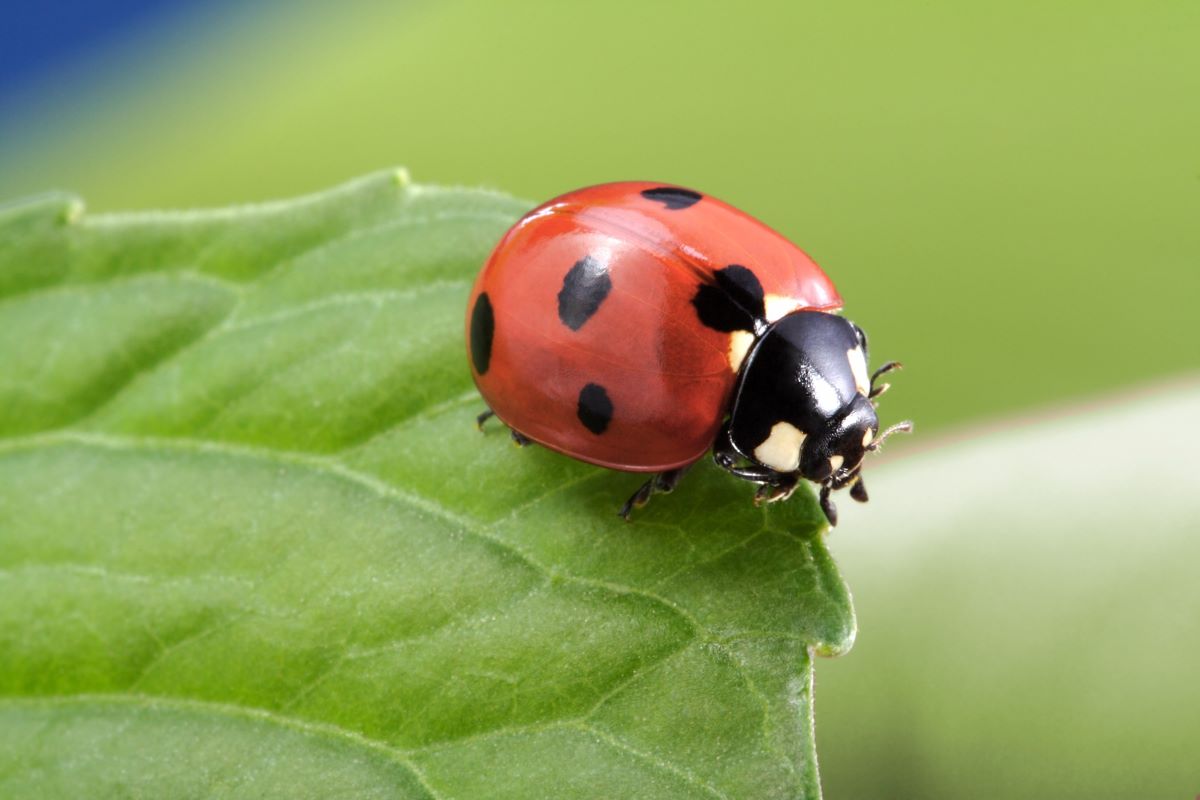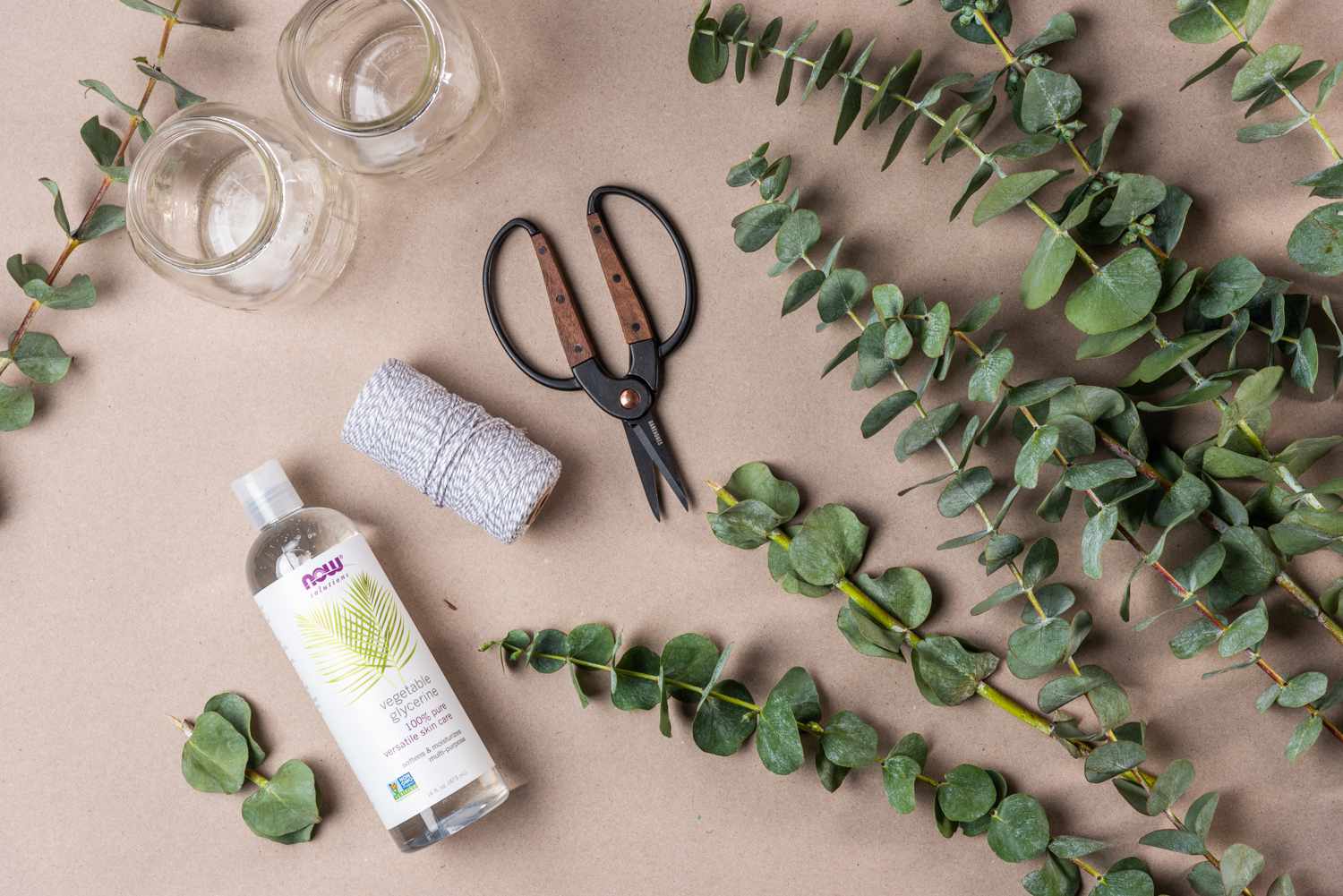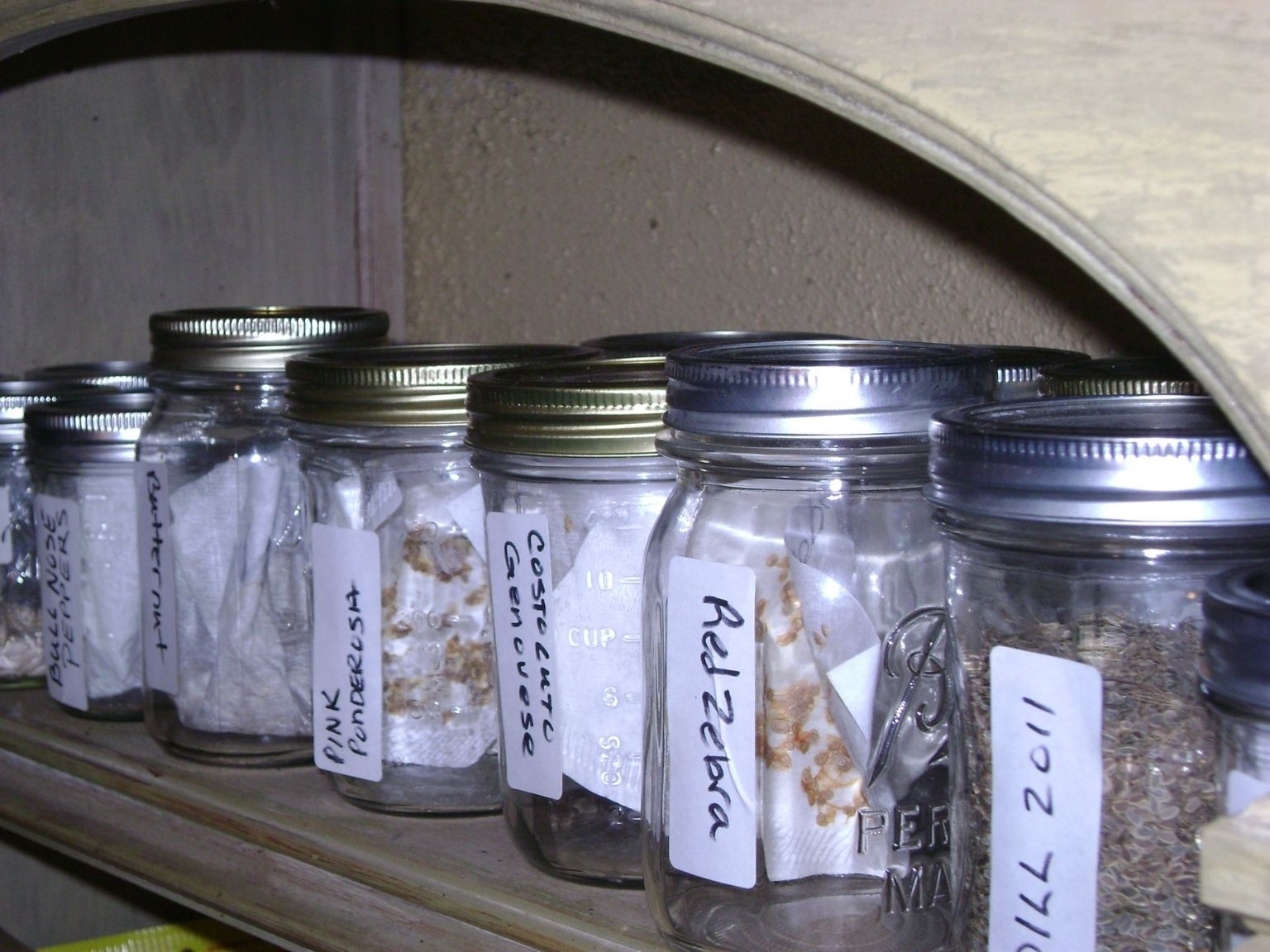

Articles
How To Store Ladybugs
Modified: December 7, 2023
Learn the best methods for storing ladybugs and keeping them healthy. Find informative articles on ladybug care, habitat, and more.
(Many of the links in this article redirect to a specific reviewed product. Your purchase of these products through affiliate links helps to generate commission for Storables.com, at no extra cost. Learn more)
Introduction
Welcome to the fascinating world of ladybugs! These small, colorful insects are not only a delight to see in gardens and fields but also serve as beneficial predators, helping to control populations of harmful pests. If you have recently acquired ladybugs or are considering doing so, it is essential to understand the importance of proper storage. Storing ladybugs correctly will ensure their health and vitality, maximizing their effectiveness in your garden or greenhouse.
Proper storage is crucial for several reasons. Firstly, it helps maintain ladybugs’ overall well-being, keeping them alive and active. Secondly, it allows you to store ladybugs for longer periods, giving you flexibility in releasing them when needed. Lastly, storing ladybugs effectively helps prevent contamination and disease, ensuring that the ladybugs are in optimal condition before being introduced to your garden.
Before we dive into the specifics of how to store ladybugs, it’s important to choose the right storage container. The container should be suitable for holding ladybugs comfortably, providing them with the necessary space while also allowing for proper ventilation. A well-ventilated container will prevent the build-up of moisture and ensure the ladybugs have sufficient oxygen.
Creating a suitable environment for ladybugs is another crucial factor to consider. Ladybugs prefer a cool and humid environment, similar to their natural habitats. Providing them with a controlled environment will help them thrive. Moreover, proper feeding and watering are essential for keeping ladybugs healthy and active.
Maintaining the right temperature and humidity levels is critical when storing ladybugs. You need to monitor and adjust these factors accordingly to prevent stress or damage to the ladybugs. Additionally, handling and transferring ladybugs should be done with care to prevent injuries and ensure their safety.
Contamination and disease prevention are vital aspects of ladybug storage. Ensuring a clean environment, free from harmful substances and pathogens, is crucial for their well-being. Furthermore, understanding how to store ladybugs in different life stages is essential since their needs can vary depending on their developmental stage.
Regular monitoring and checking of ladybugs are necessary to ensure their health and well-being. This involves inspecting the storage container, checking for any signs of stress, disease, or mortality. By keeping a close eye on the ladybugs, you can address any issues promptly and take appropriate actions.
With this comprehensive guide, you will learn the essential steps and considerations for storing ladybugs effectively. By following these guidelines, you can maintain a healthy and thriving population of ladybugs, ready to provide natural pest control in your garden. Get ready to unleash the power of ladybugs and witness nature’s eco-friendly solution for pest management.
Key Takeaways:
- Proper ladybug storage is crucial for maintaining their health, longevity, and effectiveness as natural pest controllers. From choosing the right container to monitoring regularly, every step plays a vital role in their successful storage.
- By creating a suitable environment, providing proper nutrition, and preventing contamination, you can ensure the well-being and readiness of ladybugs for natural pest control. Regular monitoring and gentle handling are key to their successful storage.
Read more: How To Keep Ladybugs In Your Garden
Importance of Proper Ladybug Storage
Proper ladybug storage is of utmost importance to ensure the health and vitality of these beneficial insects. Ladybugs, also known as ladybirds or lady beetles, play a crucial role in natural pest control, making them a valuable asset in gardens, greenhouses, and agricultural fields. Here are several reasons why proper storage is essential:
- Maintaining Ladybug Health: Storing ladybugs correctly helps maintain their overall health and well-being. By providing them with the right environment and conditions, you can prevent stress, disease, and mortality, ensuring that the ladybugs are in optimal condition.
- Long-Term Storage: Effective storage techniques allow you to store ladybugs for longer periods. This can be particularly beneficial if you want to release them gradually over time or if you have purchased a larger quantity than you currently need. Proper storage ensures that the ladybugs remain healthy and viable until you are ready to release them.
- Optimal Performance: Storing ladybugs correctly helps maximize their effectiveness as natural predators. When ladybugs are stored in suitable conditions, they are more active and efficient in preying on harmful pests. This enhances their pest control capabilities and increases the chances of a successful biological control program.
- Contamination Prevention: Proper storage practices help prevent contamination and the spread of diseases. A clean and hygienic environment reduces the risk of introducing harmful substances or pathogens to the ladybugs. By minimizing the chances of infection or disease, you can ensure the overall health and quality of the ladybugs.
- Economic Considerations: Storing ladybugs effectively can offer economic benefits. By being able to store ladybugs for longer periods, you can take advantage of bulk purchases or seasonal availability. This can help save costs in the long run and provide a sustainable solution for pest management in your garden or greenhouse.
- Eco-Friendly Pest Control: Ladybugs are renowned for their voracious appetite for aphids, mites, and other pests. By storing ladybugs correctly, you can maintain a stable population of these beneficial insects, allowing for natural and eco-friendly pest control. By reducing the need for chemical pesticides, you contribute to a healthier and more sustainable environment.
Proper ladybug storage is not a one-size-fits-all approach. Different species of ladybugs may have slightly different needs and requirements. Understanding the specific needs of the ladybug species you are working with is crucial for successful storage and release. By providing the ideal conditions and regular monitoring, you can ensure the longevity and effectiveness of your ladybug population, resulting in a thriving garden ecosystem.
Choosing the Right Storage Container
When it comes to storing ladybugs, choosing the right storage container is essential for their well-being and longevity. The container you select should provide a comfortable and suitable environment for the ladybugs. Here are some factors to consider when choosing a storage container:
- Size: The size of the container will depend on the number of ladybugs you have and the amount of space they need. It is important to provide enough room for the ladybugs to move around comfortably without overcrowding. A container that is too small can cause stress and hinder their natural behaviors.
- Material: Select a container made of smooth and non-toxic material. Plastic containers with smooth surfaces are often a good choice as they can be easily cleaned and sanitized. Avoid materials that can be harmful or toxic to the ladybugs, such as containers made of certain metals or treated wood.
- Lid and Ventilation: The container should have a secure lid to prevent escapes and keep the ladybugs contained. Additionally, it should also provide adequate ventilation to allow for proper airflow and oxygen exchange. This helps prevent the build-up of moisture and ensures the ladybugs have a fresh supply of air.
- Transparency: Consider using a transparent or semi-transparent container. Ladybugs are attracted to light and may be more active and comfortable in a container that allows them to see their surroundings. Transparency also allows you to monitor the ladybugs without disturbing them excessively.
- Portability: If you plan on moving the container, such as for transportation or release in different locations, it is important to choose a container that is easily portable. Look for handles or lightweight options that make it convenient to carry or transport the ladybugs.
It is also worth mentioning that some commercial ladybug suppliers may provide you with containers specifically designed for ladybug storage. These containers are often designed to meet the specific needs of ladybugs and may come with features such as ventilation holes, easy access lids, and partitions for separating different groups of ladybugs.
Remember, cleanliness is crucial when selecting a storage container. Before transferring ladybugs into a new container, ensure that it is clean and free from any residues, chemicals, or contaminants that could harm the ladybugs. Regular cleaning and sanitizing of the storage container are also important to maintain a healthy environment for the ladybugs.
By choosing the right storage container, you can provide a comfortable and suitable space for your ladybugs. This will help ensure their well-being and create an optimal environment for them to thrive, increasing their effectiveness as natural pest controllers in your garden or greenhouse.
Creating a Suitable Environment
Creating a suitable environment is crucial when it comes to storing ladybugs. Ladybugs have specific habitat preferences, and replicating their natural environment will help them thrive and remain healthy. Here are some key factors to consider when creating a suitable environment for your stored ladybugs:
- Temperature: Ladybugs prefer cooler temperatures, as they are more active and efficient in cooler conditions. The ideal temperature range for storing ladybugs is typically between 50 to 60 degrees Fahrenheit (10 to 15 degrees Celsius). Avoid storing ladybugs in areas that are too hot or too cold, as extreme temperatures can stress or even kill them.
- Humidity: Ladybugs also require a relatively high humidity level to stay hydrated and maintain their health. Aim for a humidity level of around 80% to 90%. You can achieve this by lightly misting the storage container with water or placing a damp sponge or cloth inside the container. Regularly monitor and adjust the humidity levels to prevent excessive dryness or dampness.
- Light: While ladybugs are attracted to light, prolonged exposure to direct sunlight can be detrimental to them. It can lead to overheating and dehydration. Place the storage container in a location that receives indirect sunlight or provide artificial light sources with soft, diffuse lighting.
- Ventilation: Proper ventilation is essential to ensure adequate airflow and oxygen exchange within the storage container. Good ventilation helps prevent the build-up of moisture, mold, and carbon dioxide, creating a healthier environment for the ladybugs. Ensure that the storage container has small ventilation holes or gaps while still maintaining a secure lid to prevent unwanted escapes.
- Substrate: Some ladybug species benefit from having a suitable substrate in their storage container. A substrate, such as wood chips, damp leaves, or a layer of soil, provides a natural and comfortable habitat for the ladybugs. It can also help maintain humidity levels. Research the specific substrate preferences of the ladybug species you are working with and provide it accordingly.
In addition to these environmental factors, it’s important to monitor the conditions regularly. Ladybugs are sensitive to changes in their environment, and slight adjustments may be needed to maintain optimal conditions. Use a thermometer and hygrometer to regularly check the temperature and humidity levels within the storage container.
Remember to handle the ladybugs with care while creating and maintaining their environment. Avoid sudden movements or disturbances that can cause stress. Gentle handling and minimal disruption will help keep the ladybugs calm and comfortable.
By creating a suitable environment that mimics the ladybugs’ natural habitat, you can ensure their well-being and increase their chances of survival while in storage. This will ultimately result in healthier and more active ladybugs ready to fulfill their role as natural pest controllers when released in your garden or greenhouse.
Feeding and Watering Ladybugs
Feeding and watering ladybugs is an essential aspect of their care while in storage. Providing them with proper nutrition and hydration will help keep them healthy, active, and ready to perform their natural pest control duties. Here are some guidelines for feeding and watering ladybugs:
- Food Source: Ladybugs primarily feed on small, soft-bodied insects such as aphids, mites, and scale insects. If your storage container allows, you can introduce some of these prey insects into the container to provide a food source for the ladybugs. These prey insects can be obtained from your garden or purchased from a reputable supplier.
- Pollen and Nectar: In addition to live prey, ladybugs also benefit from a source of pollen and nectar. This provides essential carbohydrates and nutrients. You can provide this by placing a small dish or cotton ball soaked in a sugar water solution inside the storage container. Alternatively, you can offer fresh flowers or pieces of fruit that produce nectar.
- Water: Ladybugs require access to water for drinking and staying hydrated. To provide water, you can lightly mist the storage container with water using a spray bottle. This will create small droplets of moisture that the ladybugs can drink from. Alternatively, you can place a shallow dish with water inside the container, making sure it is shallow enough to prevent the ladybugs from drowning.
- Frequency: It is important to regularly replenish the food and water sources in the storage container. Check the food supply daily and remove any prey insects that may have died or become uneaten. Refresh the water source every few days or as needed to ensure a fresh and clean water supply for the ladybugs. Regular monitoring and maintenance are key to keeping the ladybugs healthy.
- Quality of Food and Water: Ensure that the prey insects and water provided to the ladybugs are free from pesticides and contaminants. Pesticides can be harmful or even fatal to ladybugs, so it is important to source prey insects from pesticide-free areas and avoid using chemical-based pesticides in your garden or greenhouse.
- Observation: While providing food and water sources is important, it is also essential to observe the ladybugs’ behavior and feeding patterns. Ladybugs are voracious eaters, and a healthy, active ladybug will actively hunt and consume prey insects. Monitor the ladybugs to ensure they are eating and drinking adequately. If you notice a lack of activity or feeding, it may be an indication of stress or an issue with the storage conditions.
Remember to handle the storage container with care while feeding and watering the ladybugs. Avoid sudden movements or disturbances that can cause stress. Gentle and minimal disruption will help keep the ladybugs calm and comfortable.
By providing a proper food source and ensuring access to water, you can promote the health and vitality of the ladybugs during their time in storage. This will ensure they are well-nourished and prepared to play their important role in natural pest control when released into your garden or greenhouse.
Read also: 15 Amazing Steam Cleaner Ladybug For 2024
Maintaining Temperature and Humidity Levels
Maintaining proper temperature and humidity levels is crucial for the well-being of ladybugs in storage. Ladybugs are sensitive to these environmental factors, and deviations from their preferred conditions can negatively impact their health and activity. Here are some guidelines for maintaining optimal temperature and humidity levels for stored ladybugs:
- Temperature: Ladybugs prefer cooler temperatures ranging from 50 to 60 degrees Fahrenheit (10 to 15 degrees Celsius). It is important to monitor the temperature within the storage container regularly using a thermometer. Avoid exposing the ladybugs to extreme temperatures that could cause stress or even death. If necessary, consider using a temperature-controlled environment such as a cool basement or fridge to help maintain the desired temperature range.
- Humidity: Ladybugs require a relatively high humidity level to stay hydrated and thrive. Aim for a humidity level of around 80% to 90%. You can achieve this by lightly misting the storage container with water using a spray bottle. Another method is to place a damp sponge or cloth inside the container to provide a source of moisture. Regularly monitor the humidity levels using a hygrometer to ensure they are within the appropriate range.
- Ventilation: Proper ventilation is essential for maintaining the right temperature and humidity levels. Good airflow helps prevent the build-up of moisture and stagnant air, which can lead to mold or bacterial growth. However, while ventilation is important, be cautious that the storage container does not become too drafty, as this can cause the ladybugs to become stressed. Strike a balance between adequate ventilation and maintaining a stable environment.
- Monitoring: Regularly monitor both the temperature and humidity levels in the storage container. Check them at least once a day and make adjustments if necessary. Take note of any fluctuations or sudden changes in the conditions, as this can indicate potential issues with the storage environment or equipment. Regular monitoring helps ensure the ladybugs are kept in optimal conditions.
- Location: Consider the location of the storage container to help maintain suitable temperature and humidity levels. Find a place that is away from direct sunlight and sources of heat that could raise the temperature too high. Additionally, avoid areas that are prone to extreme temperature fluctuations or excessive moisture, as these conditions can be detrimental to the ladybugs.
Remember, ladybugs are delicate creatures, and sudden changes in temperature or humidity can cause stress and harm their overall well-being. Take precautions to maintain a stable and comfortable environment for the ladybugs throughout their storage period.
By carefully monitoring and adjusting the temperature and humidity levels, you can provide an optimal environment for the ladybugs in storage. This will promote their health, activity, and readiness for release when the time comes to introduce them into your garden or greenhouse for natural pest control.
Store ladybugs in the refrigerator to keep them dormant before releasing them into your garden. Place them in a paper bag with a few small holes for ventilation. Keep them in the fridge for 1-2 days before releasing.
Handling and Transferring Ladybugs
Proper handling and transferring techniques are crucial when working with ladybugs to ensure their safety and minimize stress. Whether you are transferring ladybugs to a storage container, releasing them into your garden, or moving them to a different location, following these guidelines will help ensure a smooth and successful transition:
- Gentle Approach: Ladybugs are delicate creatures, so it’s important to handle them gently and with care. Use a soft and steady touch to avoid accidentally harming or crushing them. Avoid sudden movements or jostling that can cause stress or make them take flight.
- Hand Placement: When picking up ladybugs, try to place your hand or fingers gently beneath them, allowing them to crawl onto your hand willingly. Avoid pinching or squeezing them, as this can harm their delicate body parts.
- Transferring Tools: If you need to transfer ladybugs from one container to another, it can be helpful to use tools such as a soft paintbrush, a spoon, or a small plastic scoop. This allows you to carefully guide the ladybugs into the desired container without direct contact or causing unnecessary stress.
- Avoid Excessive Handling: Ladybugs are sensitive to excessive handling and may become stressed if handled too much. Minimize unnecessary contact and handling to reduce the risk of injury or agitation. Only handle the ladybugs when necessary, such as during transfer or release.
- Timing of Transfer or Release: When transferring or releasing ladybugs, choose a time when the temperature is moderate and the weather conditions are suitable. Avoid releasing ladybugs during extreme heat, cold, or heavy rainfall, as these conditions can be detrimental to their survival. Opt for early morning or evening when the temperatures are cooler and the ladybugs are less active.
- Targeted Release: If you are releasing ladybugs in your garden for pest control purposes, it is important to target the areas where pests are present. Release the ladybugs near infected plants or areas where pest populations are high. The ladybugs will naturally disperse and search for prey, helping to control the pest population effectively.
- Avoid Wet or Pesticide-Treated Areas: When transferring or releasing ladybugs, avoid wet or damp areas, as excessive moisture can harm or drown them. Additionally, avoid releasing ladybugs in areas recently treated with pesticides or chemical-based insecticides, as these can be harmful or lethal to the ladybugs. Choose areas that provide a safe and suitable habitat for the ladybugs.
Remember, the goal is to handle and transfer ladybugs with minimal stress and risk of harm. By employing gentle techniques and being mindful of their well-being, you can ensure a safe and successful transition for the ladybugs.
By following these guidelines, you can handle and transfer ladybugs safely and effectively, minimizing stress and ensuring their well-being during the process. This will help maintain their health and readiness to perform their important role as natural pest controllers in your garden or greenhouse.
Preventing Contamination and Disease
Preventing contamination and disease is crucial for maintaining the health and well-being of ladybugs. By taking proactive measures to create a clean and hygienic environment, you can minimize the risk of introducing harmful substances or pathogens to the ladybugs. Here are some guidelines for preventing contamination and disease in ladybug storage:
- Cleanliness: Start by ensuring that the storage container and any equipment used in handling or caring for the ladybugs are clean and free from residues or contaminants. Regularly clean and sanitize the storage container, using a mild detergent or soap and rinsing thoroughly. Avoid using harsh chemicals that could be harmful to the ladybugs.
- Handling Hygiene: Practicing good hygiene when handling ladybugs is essential to prevent contamination. Wash your hands thoroughly before and after handling ladybugs or their storage container. This helps prevent the transfer of potential pathogens or chemicals from your hands to the ladybugs.
- Pesticide-Free Environment: Ladybugs are highly sensitive to pesticides and chemical-based insecticides. To prevent contamination and harm to the ladybugs, refrain from using pesticides or chemical-based products in the area where the ladybugs are kept or released. Make sure the prey insects provided for food are also pesticide-free.
- Source Control: When sourcing prey insects for feeding the ladybugs, ensure that the insects come from a reliable and reputable source. Avoid collecting insects from areas that may have been exposed to pesticides or other harmful substances. This helps prevent the introduction of potential contaminants to the ladybugs’ environment.
- Quarantine: When introducing new ladybugs to an existing population, consider implementing a quarantine period. Separate the new ladybugs in a separate container for a period of time to observe them for signs of disease or ill health. This prevents the spread of any potential diseases or parasites within the established ladybug population.
- Regular Inspection: Regularly inspect the storage container and ladybugs for any signs of disease, mold, or other abnormalities. Look out for any unusual behavior, discoloration, or excessive mortality. If you notice any signs of disease or distress, promptly take action by quarantining affected individuals and seeking the advice of an expert or local agricultural extension office.
- Proper Waste Disposal: Dispose of any dead ladybugs or uneaten prey insects promptly and properly. Remove any debris or organic matter from the storage container regularly to prevent the build-up of mold or harmful bacteria. Proper waste management helps maintain a clean and healthy environment for the ladybugs.
By practicing good hygiene, sourcing from reliable sources, and maintaining a clean and pesticide-free environment, you can significantly reduce the risk of contamination and disease in ladybug storage. This promotes the overall health and vitality of the ladybugs, ensuring they are ready to fulfill their role as natural pest controllers.
Regular monitoring and attentive care are necessary to prevent contamination and disease in ladybug storage. By being proactive in preventing potential risks, you can maintain a safe and healthy environment for the ladybugs throughout their storage period.
Storing Ladybugs in Different Life Stages
When storing ladybugs, it is important to consider the different life stages they go through: eggs, larvae, pupae, and adults. Each stage has specific needs and requirements that should be taken into account to ensure their well-being. Here are some guidelines for storing ladybugs in different life stages:
- Eggs: Ladybug eggs are small, oval-shaped, and usually yellow or orange. When storing ladybug eggs, it is important to provide a suitable substrate such as damp leaves or a layer of soil. The substrate should be kept slightly moist, but not overly wet, to provide the necessary humidity for the eggs to hatch. Store the eggs in a well-ventilated container and monitor the humidity levels regularly to ensure they remain within the appropriate range.
- Larvae: Ladybug larvae are active predators and will require a steady supply of prey insects for nourishment. They may also benefit from a substrate such as damp soil or leaves to provide a comfortable environment. Store the larvae in a container with adequate ventilation and provide regular feedings with small soft-bodied prey insects. Make sure the prey insects are appropriate for the size and age of the larvae to ensure they can be properly consumed.
- Pupae: Ladybug pupae are the stage where the larvae undergo metamorphosis into adults. Pupae require a stable and undisturbed environment to complete their development. Place the pupae in a well-ventilated container with a suitable substrate, such as a layer of soil or leaves. Ensure that the container is kept at a stable temperature and humidity level. Avoid handling or disturbing the pupae during this stage, as any disruption can interfere with their development.
- Adults: Adult ladybugs are the fully developed individuals ready for release or deployment in the garden for pest control. Store adult ladybugs in a suitable container with adequate ventilation, a comfortable substrate, and a source of food such as live prey insects or pollen and nectar. Maintain the appropriate temperature and humidity conditions, and regularly inspect the container for signs of stress, disease, or mortality. Adults can be released as needed or kept in storage for short periods until they are ready to be deployed.
It is important to note that while some ladybug species have different yet similar life cycle stages, the specific needs and requirements may vary. Research the specific species you are working with to ensure you are providing the optimal conditions for each life stage.
By understanding and meeting the needs of ladybugs at each life stage, you can ensure their proper development and overall health. This will result in strong and active ladybugs ready to fulfill their role in natural pest control.
Read also: 10 Amazing Ladybug Steam Cleaner For 2024
Monitoring and Checking Ladybugs Regularly
Regular monitoring and checking are essential to ensure the health and well-being of stored ladybugs. By observing their behavior, health, and overall condition, you can identify any potential issues early on and take appropriate actions. Here are some important aspects to consider when monitoring and checking ladybugs:
- Visual Inspection: Regularly inspect the ladybugs and their storage container visually. Look for any signs of stress, disease, or mortality. Check for any visible damage or abnormalities. Pay attention to changes in behavior, such as decreased activity or appetite. If you notice any issues, investigate the cause and address it promptly.
- Temperature and Humidity: Monitor the temperature and humidity levels in the storage container regularly using a thermometer and hygrometer. Ensure that the temperature remains within the required range and that the humidity levels are appropriate for the ladybugs’ well-being. Make adjustments as necessary, especially if you observe any signs of discomfort or stress in the ladybugs.
- Food and Water Supply: Check the food and water supply provided to the ladybugs regularly. Ensure that there is an adequate amount of prey insects available for feeding and that the water source is fresh and clean. Remove any uneaten prey insects or debris from the container to maintain cleanliness. If necessary, replenish the food and water supply to ensure the ladybugs are well-nourished and hydrated.
- Behavioral Observation: Observe the ladybugs’ behavior and activity level regularly. Healthy ladybugs should be active and mobile, moving around the container in search of prey or suitable spots. Notice any changes in their behavior, such as excessive lethargy or hiding, as it could indicate underlying issues. Active and alert ladybugs are more likely to be healthy and ready for release or deployment.
- Mortality Check: Keep track of any mortalities among the ladybugs. It is natural to experience some mortality, but excessive deaths may indicate problems with the storage conditions or the health of the ladybugs. Remove any dead ladybugs promptly to prevent contamination and monitor the overall mortality rate.
- Record Keeping: Maintain records of your observations, including temperature and humidity levels, feeding and watering schedules, and any notable changes in behavior or condition. This will help you track the progress and health of the ladybugs over time and assist in making any necessary adjustments to their storage environment.
- Expert Consultation: If you are unsure about any observations or notice persistent issues with the ladybugs, consider consulting with a local agricultural expert, entomologist, or ladybug supplier. They can provide guidance and advice based on their expertise and experience, helping you address any concerns or problems effectively.
Regular monitoring and checking are key to ensuring the well-being and success of stored ladybugs. By being attentive and proactive in your observations, you can maintain a healthy and thriving population, ready to fulfill their role as natural pest controllers when released into your garden or greenhouse.
Conclusion
Storing ladybugs properly is essential for their health, vitality, and effectiveness in natural pest control. By following the guidelines discussed in this article, you can create an optimal environment that meets the specific needs of ladybugs at each life stage. From choosing the right storage container to maintaining suitable temperature and humidity levels, feeding and watering, handling and transferring, preventing contamination and disease, and monitoring regularly, every step plays a crucial role in the successful storage of ladybugs.
Proper storage techniques help ensure the ladybugs remain healthy and active, maximizing their potential as natural predators for controlling harmful pests. By providing the correct environmental factors, such as temperature and humidity, and offering a suitable food source, you promote their well-being and increase their effectiveness in pest control efforts.
Regular checks and observations are essential to identify any issues or abnormalities early on. By monitoring temperature and humidity levels, inspecting the ladybugs for signs of stress or disease, and checking the food and water supply, you can address any concerns promptly and prevent further complications. Keeping records of your observations and consulting experts when needed will further assist in creating a successful storage and release strategy for ladybugs.
Remember, ladybugs are delicate creatures that require gentle handling and special care. Avoid exposing them to extreme temperatures, excessive moisture, or pesticide-treated areas. By striving to create a clean and pesticide-free environment, you protect the ladybugs from contamination and ensure their health and well-being.
By implementing the proper techniques and practices outlined in this article, you can successfully store ladybugs and capitalize on their natural pest control capabilities. With a healthy and thriving population of ladybugs, you can create a more sustainable and eco-friendly environment in your garden or greenhouse. Embrace the power of ladybugs and let them work their magic in controlling pests naturally.
Frequently Asked Questions about How To Store Ladybugs
Was this page helpful?
At Storables.com, we guarantee accurate and reliable information. Our content, validated by Expert Board Contributors, is crafted following stringent Editorial Policies. We're committed to providing you with well-researched, expert-backed insights for all your informational needs.














0 thoughts on “How To Store Ladybugs”